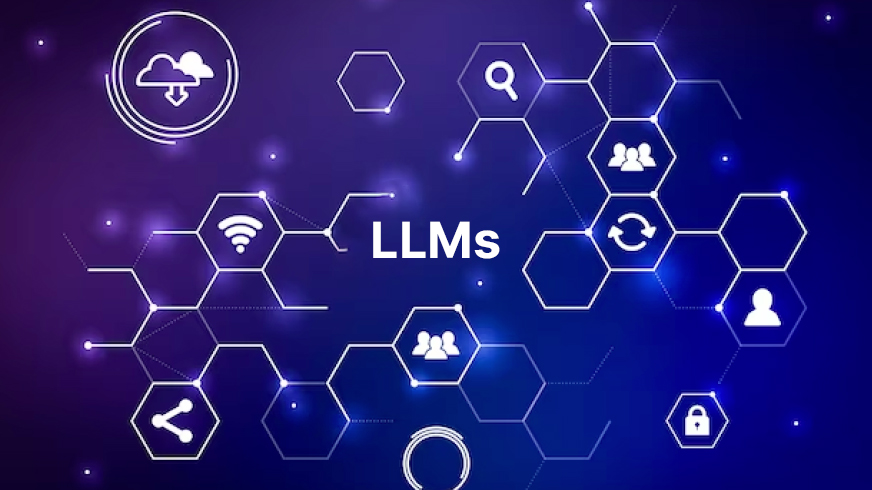
Introduction
LLMs are changing how we engage with technology today. These AI programs are able to comprehend and mimic human language. They can be applied to data analysis, customer service, content creation, and other areas. But for newcomers in particular, knowing how to use them could appear challenging. This article will walk readers through the 7 essential steps to master large language models.
This article also aims to provide a thorough manual for learning LLMs by defining seven crucial steps. Even novices can grasp and efficiently use the power of LLMs by decomposing the procedure into easy-to-complete actions. After reading this article, readers will be able to use LLMs for a variety of purposes by knowing the fundamentals and knowing how to adjust and assess models.
Overview
- Understand the fundamentals of Large Language Models and their capabilities.
- Familiarize yourself with different types of LLMs and their applications.
- Set up a development environment for working with LLMs, including accessing pre-trained models.
- Emphasize the importance of data preparation for achieving accurate and reliable results.
- Learn how to fine-tune LLMs for specific tasks to improve performance.
- Evaluate model outputs and interpret results to assess accuracy and relevance.
- Continuously iterate and improve LLM implementations to stay ahead of evolving technologies.
Table of contents
7 Essential Steps for LLMs
Let us now explore 7 essential steps for mastering large language models.
1. Getting to Know What LLMs Are All About
It is important for someone who wants to learn LLMs deeply first to understand what they are in simple terms. These are models trained on huge volumes of text data which enables them recognize patterns, understand context and give responses just like a human being would do. Additionally, these models can also specialize in different areas such as translating languages or summarizing paragraphs among others if well fine-tuned.
2. Familiarize Yourself with Various Types of LLMs
There exist numerous categories of LLMs each designed with its own unique features and capabilities. For instance; OpenAI has GPT-3 (Generative Pre-trained Transformer 3), Google developed BERT (Bidirectional Encoder Representations from Transformers) while T5 (Text-to-Text Transfer Transformer) was created by Google AI Department. It therefore means that not all models work similarly since they have their strengths as well as weaknesses based on what task one wants them for – thus it would be necessary for one to research more about these before making any decisions.
3. Set up the Development Environment
To work with LLMs, you need a proper development environment. This might include installing required libraries and frameworks, setting up cloud services or getting access to pre-trained models. Many LLM providers offer easy-to-use APIs and SDKs (Software Development Kits) that simplify integration.
Also Read: Deploying Large Language Models in Production
4. Understand the Importance of Data Preparation
The quality of LLMs depends on the quality of data they are trained on. Therefore, before you start using them, you have to clean and prepare your dataset properly if you want to get accurate and reliable results. Text pre-processing, removal of irrelevant or sensitive information, formatting so that it can be understood by the LLM — these are just some examples.
5. Fine-tune the LLM for Your Specific Task
Even though pre-trained language models can do almost anything, they still need some help with specialization. By fine-tuning LLMs using a smaller dataset related to the main one, you enable the system to understand better your individual case peculiarities and thus achieve higher accuracy in performance.
6. Evaluate and Interpret Results
After feeding your data into the fine-tuned LLM, it’s about time to see what comes out. This means that you should assess how well the text fits known truths, forms logical chains (is coherent), relates to the topic (is relevant). Also, be ready to detect possible output limitations or biases introduced by the model itself.
Also Read: How to Evaluate a Large Language Model (LLM)?
7. Iterate Constantly and Improve Continuously
LLMs never stop changing; every now and then, one hears of a novel model or technique that promises better performance than its predecessors. Given this facts, you must keep ahead of the game by never being satisfied with your current LLM implementation — always look for new ways to make it better. Add more data sources, try different fine-tuning methods or switch to more advanced models as they become available.
Conclusion
Large Language Models are enabling human-like text comprehension, which is transforming technology. Anyone can learn LLMs by following these seven crucial stages, which cover everything from comprehending various models to optimizing efficiency. Knowing these processes can help you take advantage of new opportunities and spur innovation across a range of industries as LLM technology develops. In this article we explored 7 essential steps to master large language models.
If you find this article beneficial and want to master LLMs for real, then GenAI Pinnacle Program is the right fit for you. Learn everything about LLMs from industry leaders and best mentors in the Generative AI space. Checkout the program today!
Frequently Asked Questions
A. While prior knowledge of machine learning concepts can be beneficial, anyone with basic programming skills and an interest in natural language processing can learn about LLMs.
A. Many LLM providers offer APIs and SDKs that allow easy access to pre-trained models. Additionally, cloud services and open-source libraries provide resources for working with LLMs.
A. Challenges include data preparation, fine-tuning for specific tasks, interpreting results, and staying updated with evolving LLM technologies.
A. Ethical considerations include mitigating biases in data and model outputs, ensuring transparency in decision-making processes, and respecting user privacy.
- SEO Powered Content & PR Distribution. Get Amplified Today.
- PlatoData.Network Vertical Generative Ai. Empower Yourself. Access Here.
- PlatoAiStream. Web3 Intelligence. Knowledge Amplified. Access Here.
- PlatoESG. Carbon, CleanTech, Energy, Environment, Solar, Waste Management. Access Here.
- PlatoHealth. Biotech and Clinical Trials Intelligence. Access Here.
- Source: https://www.analyticsvidhya.com/blog/2024/06/steps-to-master-large-language-models/



